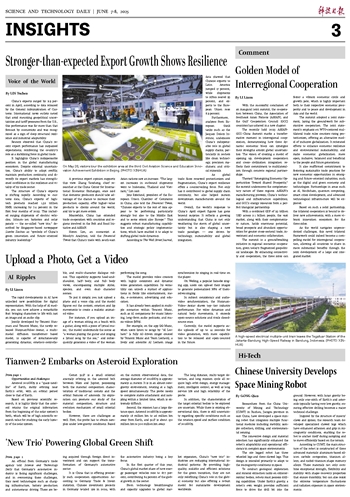
Researchers from the China University of Mining and Technology (CUMT) in Xuzhou, Jiangsu province in east China, have developed a space mining robot that integrates multiple functional modules including mobility, sample collection, drilling, and environmental sensing.
The innovative design and material selection has significantly enhanced the robot's adaptability and operational efficiency in complex space environments.
The six-legged robot has three wheeled legs and three clawed legs. This design is intended primarily to adapt to the microgravity conditions in space.
To conduct geological exploration and mineral extraction tasks on extraterrestrial bodies, robots must possess drilling capabilities. Under Earth's gravity, a robot's own weight provides sufficient force to drive the drill bit into the ground. However, with lunar gravity being only one-sixth of Earth's and asteroids typically having very low gravity, ensuring effective drilling becomes a major technical challenge.
Inspired by the structure of insects' claws and spines, the research team developed specialized clawed legs which have enhanced adhesion and grip in microgravity conditions, enabling the robot to anchor itself during sampling and to move efficiently based on the terrain.
According to CUMT, the main structure of the robot is constructed of three advanced materials: aluminum-based silicon carbide composites, titanium alloys, and nickel-titanium shape memory alloys. These materials not only combine exceptional strength, flexibility and stability with shape-recovery properties that ensure durability, but can also resist the extreme temperature fluctuations and radiation exposure in space environments.


 Next
Next




